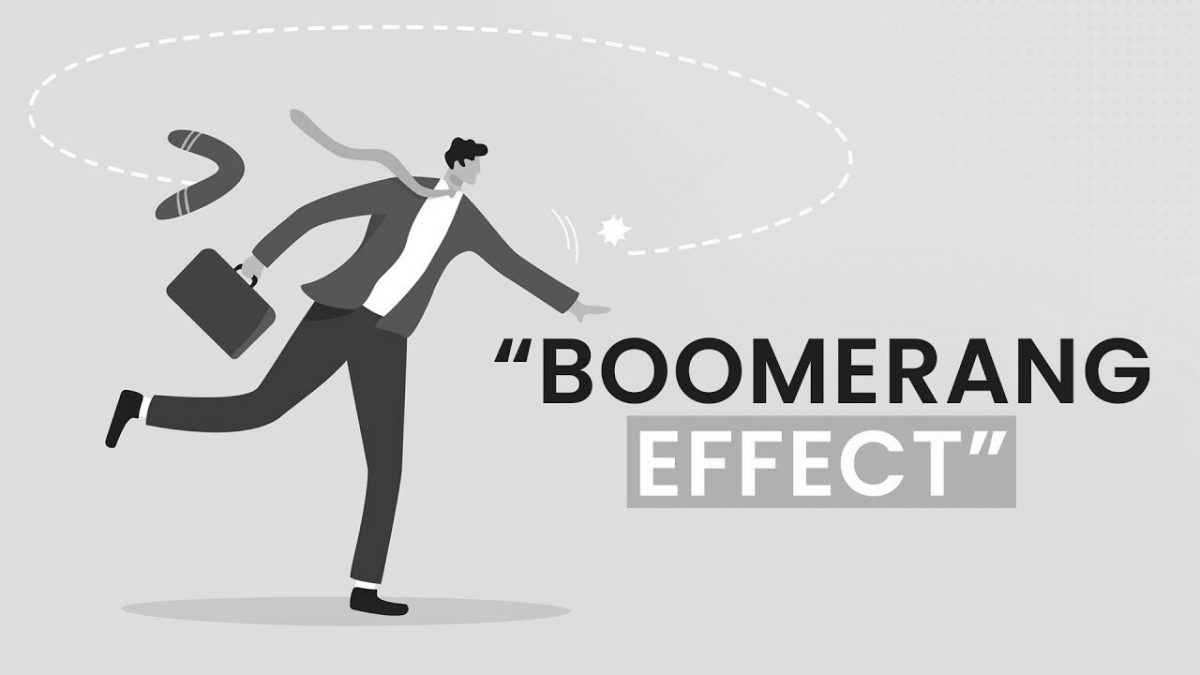Introduction
In the realm of decision-making, the human mind is susceptible to various biases and fallacies that can lead us astray from rational thinking. One such cognitive trap is the Boomerang Effect. Derived from the physical phenomenon of a boomerang’s return to its sender, the Boomerang Effect in psychology refers to a counterproductive outcome that occurs when an attempt to change someone’s attitude or behavior has the opposite effect, pushing them further away from the intended goal. This mental model is deeply rooted in human psychology and has far-reaching implications in our day-to-day lives, impacting personal choices, business strategies, and even public policy-making.
Understanding the Boomerang Effect
The Boomerang Effect manifests when attempts to persuade or influence individuals or groups result in a response that goes against the persuader’s intentions. This counterintuitive outcome is a consequence of psychological reactance, the intrinsic resistance we feel when our freedom or autonomy is threatened. When people perceive an attempt to manipulate or control their choices, their instinctive response is to defend their independence, leading to a backlash that reinforces their original attitudes or behaviors.
Examples of the Boomerang Effect
- Personal Life Decisions: Imagine a scenario where a parent tries to persuade their teenager to choose a particular career path. If the parent adopts a forceful or authoritative approach, the teenager may rebel against this perceived restriction on their autonomy and choose a completely different path, contrary to the parent’s wishes. The attempt to influence the teenager’s decision resulted in the boomerang effect, pushing them further away from the intended outcome.
- Business Scenarios: In the realm of marketing, the Boomerang Effect is prevalent. Consider an advertisement that attempts to convince consumers to switch from their current brand to a new one. If the ad employs aggressive tactics that attack the consumers’ loyalty or intelligence, it may trigger a defensive response. Rather than switching brands, consumers may become more attached to their original choice, strengthening their loyalty. The attempt to sway their preferences boomerangs, resulting in decreased chances of successful persuasion.
- Public Policy-Making: Governments and policymakers often face challenges when implementing certain regulations or policies. For instance, if a government enforces strict rules on personal freedoms or mandates certain behaviors, individuals may perceive these interventions as infringing upon their autonomy. In response, they might engage in counterproductive actions, such as protesting or engaging in non-compliance. The intended goal of the policy implementation may be lost, as the Boomerang Effect leads to increased resistance instead of cooperation.
Mental Biases and Psychological Underpinnings
The Boomerang Effect can be exacerbated by various mental biases and underlying psychological factors. Firstly, confirmation bias plays a significant role, as individuals tend to seek and interpret information that confirms their existing beliefs or attitudes. When faced with a persuasive attempt, individuals may selectively attend to information that supports their original stance, further solidifying their resistance to change.
Another contributing factor is reactance, which stems from our innate need for freedom and autonomy. When individuals perceive their freedom being curtailed, their reactance response is triggered, leading to a strong aversion to external influence. This psychological resistance makes them more likely to exhibit the Boomerang Effect, as they actively distance themselves from the persuasive message or behavior.
Additionally, the backfire effect is closely related to the Boomerang Effect. This phenomenon occurs when attempts to correct misinformation or challenge deeply held beliefs actually reinforce those beliefs instead of changing them. People tend to become defensive and resistant when confronted with information that contradicts their existing views, resulting in a reinforcement of their original stance.
Identifying and Avoiding the Boomerang Effect
To avoid falling into the trap of the Boomerang Effect, self-awareness and vigilance are crucial. Here are some strategies to consider:
- Foster empathy and active listening: Understanding the perspectives and values of others can create a more receptive environment for discussion and persuasion. By genuinely listening to others without imposing our own views, we can minimize the perceived threat to their autonomy.
- Use narratives and storytelling: Instead of relying solely on logical arguments or aggressive tactics, employing narratives and stories can be more effective in influencing attitudes and behaviors. Stories evoke emotions and allow individuals to relate to situations, making them more open to considering alternative viewpoints.
- Provide choices and promote autonomy: Offering individuals a sense of control and autonomy in decision-making reduces the likelihood of triggering reactance. Framing messages or suggestions as choices rather than impositions allows individuals to feel empowered and less defensive.
- Avoid aggressive or confrontational approaches: Aggressive or confrontational tactics often trigger a defensive response and amplify the Boomerang Effect. Instead, focus on building rapport and establishing common ground, fostering an environment that encourages open dialogue and receptivity.
- Encourage critical thinking and reflection: Promote an environment where individuals are encouraged to critically evaluate their beliefs and assumptions. By facilitating introspection and self-reflection, people are more likely to engage in thoughtful consideration and be open to change.
Conclusion
The Boomerang Effect, a counterproductive outcome in persuasion and influence, is deeply ingrained in human psychology. Understanding this mental model is essential for making informed decisions and avoiding irrational choices that go against our best interests. By recognizing the biases and psychological underpinnings that contribute to the Boomerang Effect, we can adopt strategies that minimize its impact. Empathy, active listening, and promoting autonomy can help navigate this cognitive trap, enabling more objective and effective decision-making. By embracing awareness and actively avoiding the Boomerang Effect, we can enhance our capacity for rational thinking and ultimately make better choices in various aspects of our lives.
